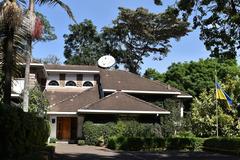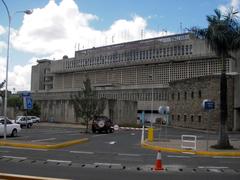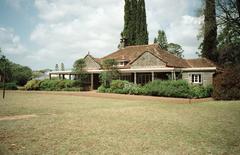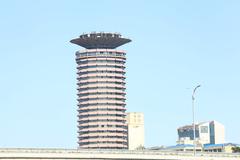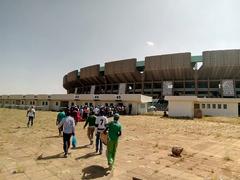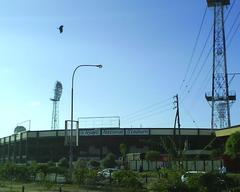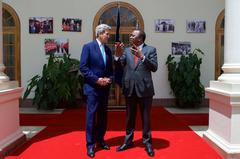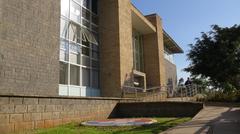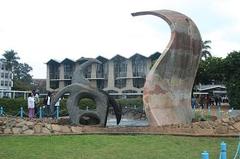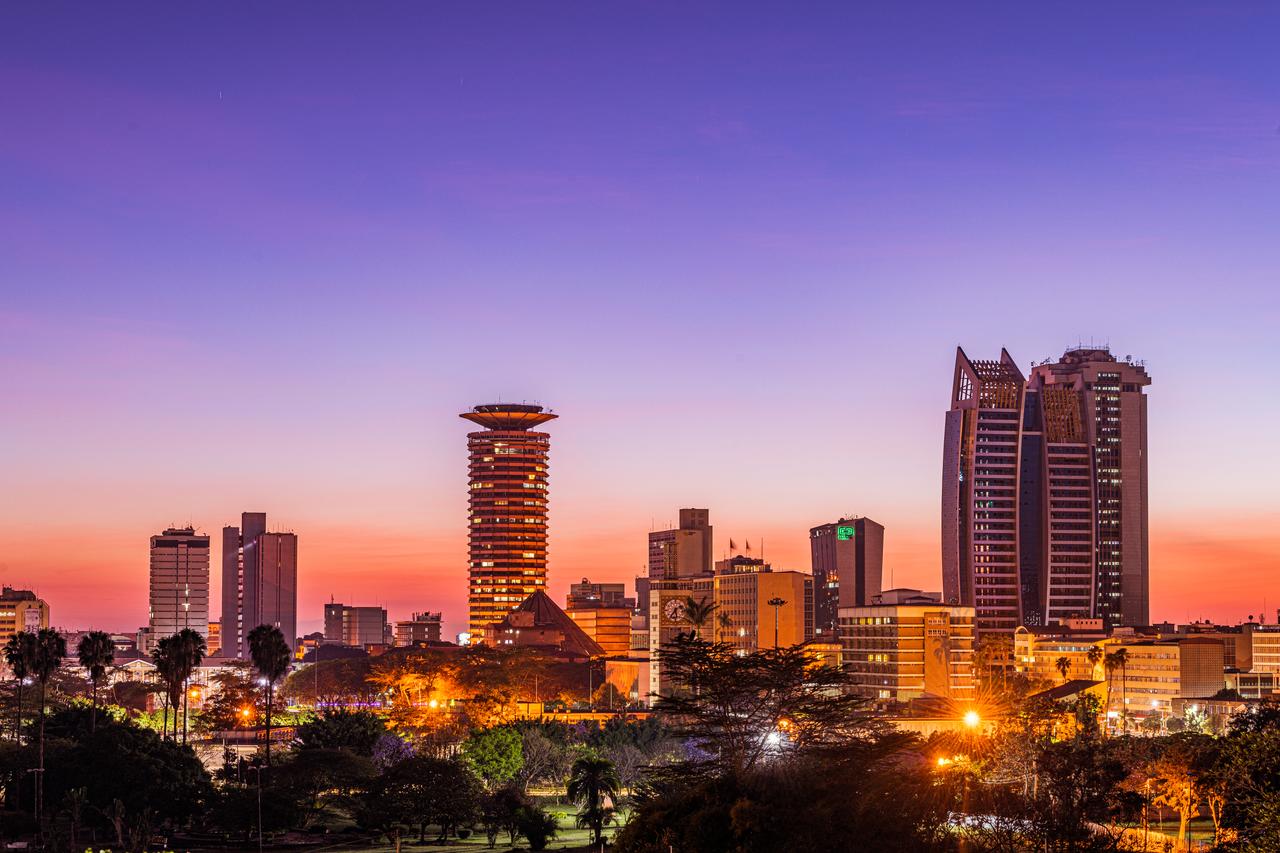
Comprehensive Guide to Visiting Nairobi, Nairobi County, Kenya
Date: 13/08/2024
Captivating Introduction
Welcome to Nairobi, the city where urban sophistication meets wild adventure! Imagine sipping a latte in a chic café while hearing the distant roars of lions from Nairobi National Park (Amazing World Travel). Intriguing, isn’t it? Nairobi, often dubbed the ‘Green City in the Sun,’ is a place of contrasts, where modern skyscrapers stand tall over sprawling savannahs and bustling markets hum with the rhythms of multiple cultures.
Did you know Nairobi is one of the few cities in the world with a national park right at its doorstep? This unique blend of urban life and wilderness makes it a treasure trove of experiences for any traveler. From exploring the city’s rich history, which dates back to its establishment in 1899 as a rail depot on the Uganda-Kenya Railway, to wandering through its hidden gardens and underground art scenes, Nairobi offers something for everyone (Wikipedia).
As you navigate through this guide, you’ll uncover Nairobi’s secrets, from its vibrant cultural landmarks like the Nairobi National Museum to local gems such as the Kazuri Beads Women’s Cooperative. This guide is crafted to not only inform but also immerse you in the sensory delights of Nairobi – the aroma of roasted maize, the sight of jacaranda trees in full bloom, and the taste of spicy samosas. Ready to dive into the heart of Kenya? Let’s embark on this journey together!
Table of Contents
- History of Nairobi
- Visitor Tips
- Entry Requirements
- Currency Exchange
- Health Precautions
- Local Languages
- Transportation Options
- Traffic Awareness
- Safety Precautions
- Dress Respectfully
- Accommodation
- Local Cuisine
- Hydration
- Internet Connectivity
- Sun Protection
- Be Wary of Scams
- Health Facilities
- Local Customs
- Wildlife Safaris
- Souvenir Shopping
- Day Trips and Excursions
- Safety for Women and LGBTQ+ Travelers
- Emergency Contacts
- Final Note - Explore with Audiala
- Call to Action
History of Nairobi
Early Beginnings
Nairobi’s history dates back to 1899 when it was established by colonial authorities in British East Africa as a rail depot on the Uganda-Kenya Railway. The site was originally a swamp land occupied by the Maasai, Akamba, and Kikuyu people. The name “Nairobi” is derived from the Maasai phrase “Enkare Nyirobi,” which translates to “the place of cool waters,” referring to the cold water stream that flowed through the area (Wikipedia).
Colonial Era
The choice of Nairobi as a rail depot was made by Sir George Whitehouse, the chief engineer of the Uganda Railway. He favored the site due to its high elevation, temperate climate, and adequate water supply, despite criticisms from other officials who felt the site was too flat and poorly drained (Wikipedia). The town quickly grew, and by 1907, Nairobi had replaced Mombasa as the capital of the East Africa Protectorate (Wikipedia).
Between 1902 and 1910, Nairobi’s population rose from 5,000 to 16,000, driven by its role as an administrative center and a hub for tourism, particularly big game hunting. The city continued to expand, leading to tensions with the Maasai and Kikuyu people, who were displaced by the growing urban area (Wikipedia).
Growth and Development
In 1919, Nairobi was declared a municipality by the British colonial government (Britannica). The city’s population continued to grow, reaching 24,000 by 1921, with native Africans constituting half of the population. This rapid growth led to planning challenges, often referred to as the “Nairobi Problem” (Wikipedia).
During the 1920s and 1930s, Nairobi saw significant development, including the construction of grand hotels to accommodate British tourists and big game hunters. The city’s infrastructure expanded, and many Britons settled in Nairobi’s suburbs (Wikipedia).
Post-Independence Era
After Kenya gained independence in 1963, Nairobi remained the capital of the Republic of Kenya. The city’s municipal area was expanded, and it became an independent unit administered by the Nairobi City Council (Britannica). During this period, Nairobi became a center for the coffee, tea, and sisal industries, contributing to its economic growth (Wikipedia).
Modern Nairobi
Today, Nairobi is the largest city in Kenya and one of the fastest-growing cities in Africa. As of the 2019 census, the city had a population of 4,397,073 (Wikipedia). The city’s growth rate was estimated to be 2.09% per year in 2023, with projections indicating that Nairobi’s population will reach 5 million by 2025 (Wikipedia).
Cultural and Historical Significance
Nairobi’s rich history is reflected in its numerous cultural and historical sites. The Nairobi National Museum, located at Museum Hill, showcases Kenya’s history, art, and paleontology (Amazing World Travel). The Karen Blixen Museum, situated in the serene Karen suburb, offers insights into the life of the famed Danish author, known for her book “Out of Africa” (Planetware).
Key Historical Landmarks
- Nairobi National Park: Located just 8 kilometers from the city center, this park offers a unique opportunity to witness Kenya’s diverse wildlife in close proximity to a bustling capital city (Amazing World Travel).
- David Sheldrick Wildlife Trust: Established in 1977, this nonprofit trust within Nairobi National Park is dedicated to the conservation of wildlife, particularly orphaned elephants (Lonely Planet).
- Giraffe Centre: This center protects the endangered Rothschild’s giraffe and offers visitors the chance to observe and interact with these majestic animals (Lonely Planet).
- Bomas of Kenya: A cultural center that showcases traditional dances and songs from Kenya’s various tribal groups, providing a glimpse into the country’s rich cultural heritage (Amazing World Travel).
Visitor Tips for Nairobi, Nairobi County, Kenya
Entry Requirements
Ready to embark on your Nairobi adventure? First, ensure you have your travel documents in order. Secure your visa easily online through the eVisa portal. Your passport should be valid for at least six months beyond your departure date. Remember to check specific visa requirements based on your nationality and travel purpose (The Wandering Voyager).
Currency Exchange
The Kenyan Shilling (KES) is your go-to currency here. Exchange services are available at Jomo Kenyatta International Airport, banks, and authorized forex bureaus. Pro tip: Exchange a small amount upon arrival for immediate expenses and rely on ATMs or credit cards for bigger transactions (Essence Holiday).
Health Precautions
Stay healthy and happy on your trip! Ensure you’re up-to-date on routine vaccines and consider additional shots for yellow fever, typhoid, and hepatitis A and B. Malaria is a concern in some areas, so pack antimalarial meds and mosquito repellents. Don’t forget to carry a copy of your vaccination records (The Wandering Voyager).
Local Languages
Swahili and English are the official languages. Knowing a few Swahili phrases can go a long way. Try saying, “Jambo” (Hello), “Asante” (Thank you), and “Kwaheri” (Goodbye). It’s a surefire way to win hearts and smiles (Essence Holiday).
Transportation Options
From taxis and Ubers to the colorful and chaotic matatus (public minibuses), Nairobi offers diverse transportation options. For an authentic experience, try a matatu ride, but be cautious about safety. Renting a car is another option—just brace yourself for the legendary Nairobi traffic (The Wandering Voyager).
Traffic Awareness
Speaking of traffic, Nairobi is notorious for its jams, especially during rush hours (7-9 AM and 4-7 PM). Plan your travels wisely to avoid delays. Use alternative routes or travel during off-peak times to make the most of your day (The Wandering Voyager).
Safety Precautions
While Nairobi is generally safe, it’s wise to exercise caution. Avoid flashing valuables and stay alert in crowded places to prevent petty theft. Stick to well-lit, populated areas, especially at night. Opt for taxis or ride-hailing services called by your hotel for extra safety (World Nomads).
Dress Respectfully
Kenya is a conservative country, so dressing modestly is appreciated. Avoid revealing outfits, especially in religious sites or rural areas. Lightweight, breathable fabrics are your best bet in Nairobi’s warm climate (The Wandering Voyager).
Accommodation
From luxury hotels to budget hostels, Nairobi has it all. Popular areas to stay include Westlands, Karen, and the Central Business District. Book early, especially during peak tourist seasons, to snag the best deals (Flash McTours).
Local Cuisine
Nairobi’s culinary scene is a feast for the senses. Don’t miss out on Nyama Choma (grilled meat), Ugali (maize porridge), and Sukuma Wiki (collard greens). For a unique dining experience, head to Carnivore Restaurant, famous for its wide variety of meats (Essence Holiday).
Hydration
Stay hydrated with bottled or filtered water. Avoid tap water and ice cubes made from tap water to steer clear of waterborne illnesses. Carry a reusable water bottle to refill at safe water stations (The Wandering Voyager).
Internet Connectivity
Good news for digital nomads! Nairobi boasts excellent internet connectivity. Many hotels, cafes, and restaurants offer free Wi-Fi. For reliable mobile data, consider getting a local SIM card from Safaricom or Airtel (The Wandering Voyager).
Sun Protection
With Nairobi’s equatorial sun, sunscreen, sunglasses, and a hat are essentials. Seek shade during peak sun hours (10 AM to 4 PM) to avoid sunburn and heat exhaustion (The Wandering Voyager).
Be Wary of Scams
Beware of scams, especially related to safaris and tours. Always book through reputable agencies and avoid deals that seem too good to be true. Verify tour operators’ credentials and read reviews before making payments (World Nomads).
Health Facilities
Nairobi is equipped with reputable hospitals and clinics, including Nairobi Hospital and Aga Khan University Hospital. Make sure you have travel insurance that covers medical expenses. Know the locations of health facilities in case of emergencies (The Wandering Voyager).
Local Customs
Respect local customs and traditions to make a positive impression. Greetings are important; a handshake is the norm. When visiting someone’s home, bring a small gift, like fruit or sweets. Always ask permission before photographing people (The Wandering Voyager).
Wildlife Safaris
Nairobi is the gateway to Kenya’s famous wildlife reserves. Nairobi National Park offers a unique safari experience with the city skyline in the backdrop. Book your safaris in advance with reputable operators for a safe and enjoyable experience (Flash McTours).
Souvenir Shopping
For authentic souvenirs, head to Maasai Market, which moves locations throughout the week. You’ll find handmade crafts, jewelry, and textiles. Bargaining is expected, so haggle politely. Other shopping spots include Village Market and Galleria Mall (The Wandering Voyager).
Day Trips and Excursions
Nairobi’s central location makes it perfect for day trips. Must-visit spots include the Giraffe Centre, David Sheldrick Wildlife Trust, and Karen Blixen Museum. Nature lovers will enjoy Lake Naivasha or Hell’s Gate National Park for breathtaking landscapes and wildlife views (OverDrive).
Safety for Women and LGBTQ+ Travelers
Women travelers should exercise caution, especially at night. Dress modestly and avoid isolated areas. LGBTQ+ travelers should note that homosexuality is criminalized in Kenya. Discretion is advised, and public displays of affection should be avoided (World Nomads).
Emergency Contacts
Keep a list of emergency contacts, including your embassy or consulate, local police, and medical facilities. Dial 999 for police assistance in emergencies. Enroll in your country’s travel alert program for real-time updates (Lonely Planet).
Final Note - Explore with Audiala
Unlock Nairobi’s secrets with Audiala, your ultimate tour guide app. Offering beautifully crafted audio guides, Audiala provides expert insights and hidden gems, making it your perfect travel companion. Download Audiala before your visit to enhance your Nairobi adventure and delve deep into the city’s stories and secrets.
Call to Action
As we conclude this comprehensive guide to Nairobi, it’s clear that the city is more than just a stopover – it’s a destination in its own right. Nairobi’s vibrancy and diversity are reflected in its bustling markets, serene parks, and rich historical landmarks. Whether you’re captivated by the tales of early railway workers laying tracks through swamps or inspired by modern conservation efforts at the David Sheldrick Wildlife Trust, Nairobi offers a narrative that is both old and new (Lonely Planet).
Safety and practical tips have been woven throughout this guide to ensure your journey is as smooth as it is exciting. Remember to greet locals with a warm ‘Jambo!’, savor the local cuisine like Nyama Choma, and always keep your wits about you in crowded places (World Nomads). And don’t forget to download Audiala, your ultimate tour guide app, to unlock Nairobi’s hidden gems and stories with expertly crafted audio guides (OverDrive).
Nairobi is a city that defies expectations and fills the senses. So why wait? Pack your bags, charge your camera, and get ready to explore a city where every corner holds a new story waiting to be discovered.
References
- Wikipedia, 2023, History of Nairobi source
- Amazing World Travel, 2023, Nairobi Travel Guide source
- Britannica, 2023, Nairobi source
- Lonely Planet, 2023, Attractions in Nairobi source
- The Wandering Voyager, 2023, Prepare for Your Travel to Nairobi source
- Essence Holiday, 2023, Nairobi Travel Guide source
- World Nomads, 2023, Travel Safety in Nairobi source
- Flash McTours, 2023, Top Things to See in Nairobi source
- Planetware, 2023, Tourist Attractions in Nairobi source
- OverDrive, 2024, Nairobi Travel Guide 2024 source







